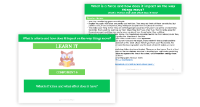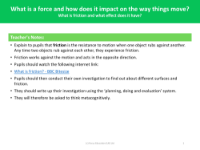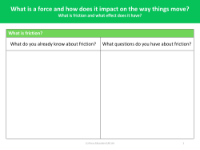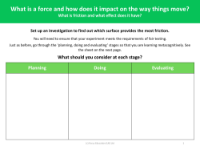What is friction and what effect does it have? - presentation
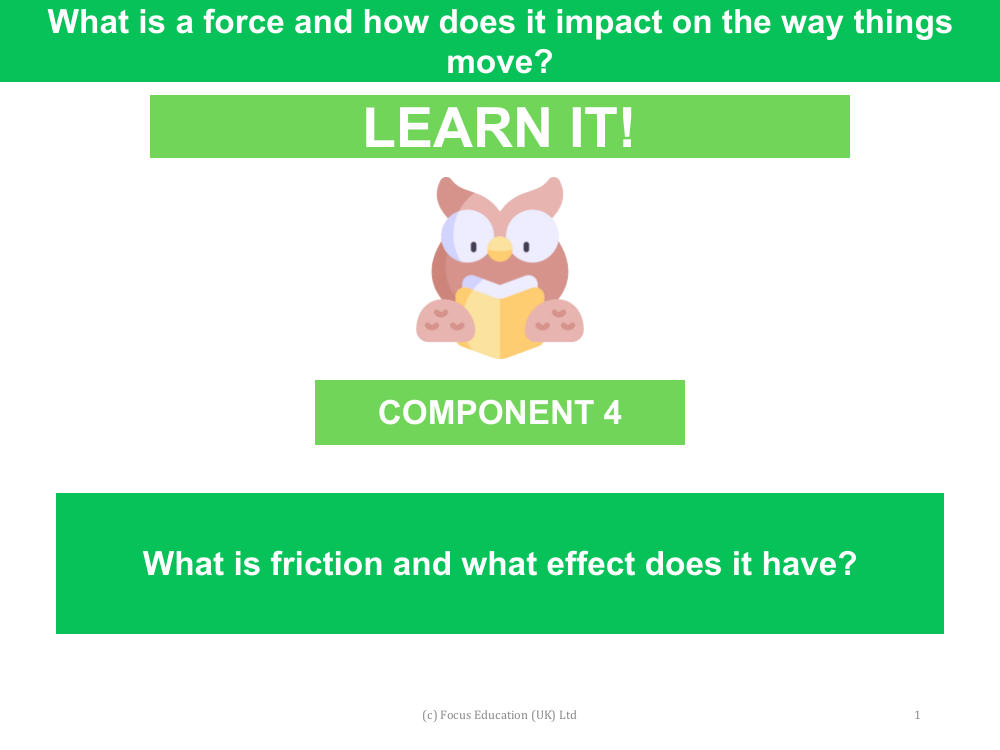
Science Resource Description
Friction is a force that occurs when two surfaces come into contact and move against each other. It acts as a resistance to motion, always working in the opposite direction to the movement of the objects involved. This force is encountered in everyday life, such as when pushing a book across a table or while walking. The level of friction depends on the texture of the surfaces in contact; rougher surfaces create more friction. This can be observed through the warmth generated when rubbing hands together. Friction has its advantages, providing grip and stability to prevent slipping, which is evident in the design of shoe soles. Conversely, in certain situations, such as within car engines, friction is undesirable and is minimised through the application of lubricants like oil to reduce wear and heat production.
To explore the concept of friction further, students are encouraged to engage in a practical investigation. They will examine how different surfaces affect friction levels by conducting experiments that adhere to the principles of fair testing. Through the process of planning, executing, and evaluating their experiments, students are prompted to think metacognitively about their learning. They will consider the challenges of the investigation, the resources needed, and collaborate with peers to refine their approach. Upon completion, students will reflect on their findings, discuss improvements for future experiments, and consider how the investigation has enhanced their understanding of scientific processes and the role of friction in motion.

